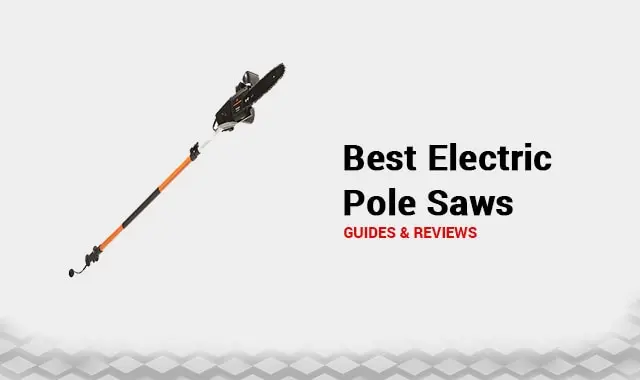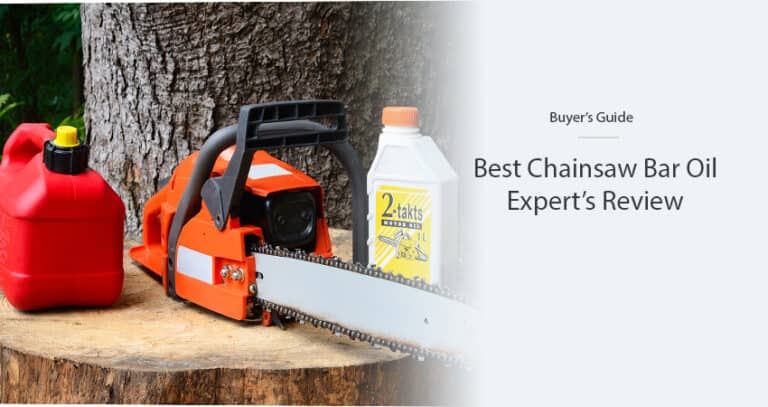
You’re probably wondering why it’s important to talk about types of chainsaws. I’ll tell you why: I believe if you don’t have the right chainsaw, you are probably making life a lot harder on yourself than it has to be.
Chainsaws can be used for a number of tasks and really bring out your creativity.
Contents
Table of contents
What is a Chainsaw?
A chainsaw is a tool that can be used to cut wood, such as trees, branches, stumps, limbs, and more.
Although traditional manual chainsaws are still floating around, the more modernized chainsaws are powered by different sources like batteries, gas, and electric cords. Some are much more powerful than others.
Of the three most common chainsaw-associated hazards (push-back, kickback, and pull-in), kickback poses the greatest threat and happens most frequently.
It is a powerful force that springs back the guide bar towards the operator suddenly and uncontrollably. This can cause serious injury.
Chainsaw Types
1. Gas-Powered Chainsaws
Gas-powered chainsaws come in various bar sizes, from 12 inches to 60 inches, and there are three grades: homeowner, farm and ranch, and professional.
Homeowner
Although homeowner models have the least power of the three grades, this kind of saw is the best for beginners, since they contain a variety of features that make them safer and easier to use. These models are designed for occasional use, and they typically are 24cc to 46cc and cost less than the other model types.
- Typical features include inertia-activated chain brakes and easy engine starters.
- Available sizes: 14-inch to 20-inch bar length
- Mostly used for removing lone trees, or cleaning up after floods or storms, among other things.
Farm and Ranch
These models are for those who cut wood and trees regularly. If you want a somewhat professional-grade chainsaw that has a more powerful kick to it, allowing you to cut through larger trees and tougher wood, but you don’t want to pay the high cost of a professional saw, then consider getting a farm and ranch gas-powered chainsaw.
- Features include adjustable oilers that offer more control over applying oil to the bar and chain, as well as enhanced vibration dampening that helps to reduce fatigue.
- Available sizes: 10-inch to 24-inch bar length
- Mostly used for cutting down trees and wood for fireplaces
Professional
Despite the high power these models produce, they are lightweight and can be used all day long, without getting tired. Built to withstand rigid jobs with effortless maneuvering, they also come with longer warranties.
- Features include ergonomic designs with a top handle to balance the weight for easy operation.
- Available sizes: 12-inch to 24-inch bar length
- Mostly used for bucking, pruning, tree felling, harvesting firewood, and more
Corded Electric Chainsaws
This type of chainsaw must be plugged into an electrical outlet in order to use. If there is no outlet nearby, you can use an extension cord to extend your workspace.
Although they are not that powerful, corded chainsaws are ideal for light to medium projects and are fairly priced.
- They are low-maintenance, lightweight, quiet, inexpensive, and cheap to operate, and they don’t give off any fumes.
- Available sizes: 6-inch to 18-inch
- Mostly used for trimming, felling small trees, cutting firewood logs, pruning, and more.
Battery-Powered Chainsaws
These chainsaws are powered by replaceable batteries that are integrated into the saw’s main housing structure. The benefit I like most about using a battery-operated chainsaw is the freedom of movement, as they are lightweight and cordless.
However, they are designed for lighter performance and can’t take on the same heavy-duty tasks that other chainsaws with more power can.
Of course, batteries are expensive to manufacture, so battery-operated chainsaws are a bit pricier than other types, and when they are drained, they will need to be recharged before you can continue using them.
- Features include warning alerts to notify you if the battery is running low or something is not working properly. They also offer tool-free adjustment and basic plastic scabbards that provide protection for the chain and for you. In addition, they are environmentally friendly.
- Available sizes: 12 to 15 pounds
- Mostly used for trimming, cutting small trees, and pruning.
Manual Chainsaws
Whether you are pruning in your garden or just gathering firewood, a manual hand-powered chainsaw is the least expensive tool you can use.
Also known as a pocket or portable chainsaw, these babies can help you get light jobs done. How quickly you get it done depends on your arm strength.
The problem with manual saws is that they can break easily. Therefore, I recommend you always have a spare with you. Furthermore, you should ensure that your saw is sharpened, so I also suggest purchasing a decent sharpener.
- Features include no cord to plug in, no battery to recharge, and no gas tank to fill. They also help you get a good workout and grow strong muscles, are easy to carry around, don’t require much maintenance, and cost a small fraction of the prices of other saw types.
- Available sizes: Wide variety of sizes.
- Mostly used for cutting wood on a budget, for a good workout, and to build muscle.
Pole Saw
A pole saw is used for areas that are hard to reach, in place of a ladder.
These are merely saws attached to a pole. Pole saws can have any power source, including battery-powered, electric cord, gas, or even manual.
- Features include the ability to cut trees and branches that are in hard-to-reach areas or from a distance.
- Available sizes: Bar lengths range from 6 inches to 12 inches, and most pole heights run from 10 to 12 feet.
- Mostly used for pruning trees to thin out dense limbs and remove unwanted or broken branches.
Chainsaw Chain Chart and Measuring Chain Size
When the time comes to replace your saw’s chain, you will need to know the exact size of the chain and to get the correct measurements, you will need to know about the unique way chainsaws are measured. Once you have the correct size figured out, it’s all downhill from there.
There are three measurements used for finding the right chain size:
- Pitch
- Gauge
- The number of drive links
The pitch is how close links are together on the chain of a chainsaw. To find the pitch, measure the distance between three rivets on the chain, then divide the value by two.
Gauge is how thick the chain is and must fit in the bar’s groove.
Drive links are the chain parts at the bottom of the chainsaw that fit in the guide bar.
Once you gather all the pieces, you can go to a chainsaw cross reference chart and put the puzzle together.
Safety When Operating a Chainsaw
I’m sure you are aware of the dangers associated with chainsaws, as they can be just as harmful as they are helpful, especially for beginners.
In fact, each year there are 28,000 chainsaw-related injuries in the U.S. alone.
However, the good news is, chainsaw injuries can be avoided by doing the following:
Cleaning and Maintaining Your Chainsaw
Some important responsibilities that come with owning a chainsaw are maintaining it by lubricating the chain with oil frequently and keeping it clean.
When cleaning, it is a good idea to take your saw apart so that it will be easier to get a more thorough detail and then put it back together again when you are done, ensuring that everything is tightened and secured back in place.
Conclusion
Now that you know about the different types of chainsaws, you can figure out which to use to get any job done right. Any job is easier when done with the right tools.
Just remember that using a chainsaw can be very dangerous, especially for a beginner, so take extra precautions while operating one.



![Best Chainsaw Bar in 2023 – [Get the Smoothest Cuts] 5 Best Chainsaw Bar in 2023 – [Get the Smoothest Cuts] Best-Chainsaw-Bar](https://brandisawyer.com/wp-content/uploads/2021/03/Best-Chainsaw-Bar.jpg)
